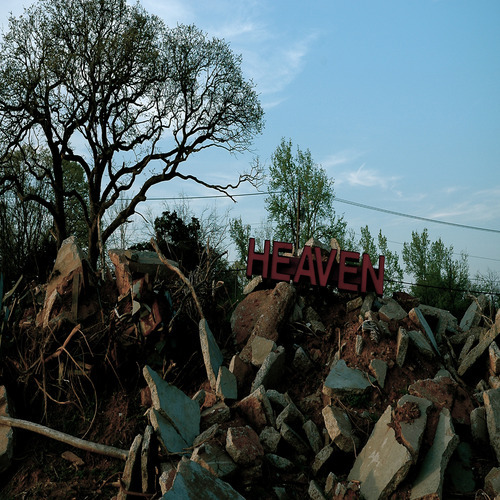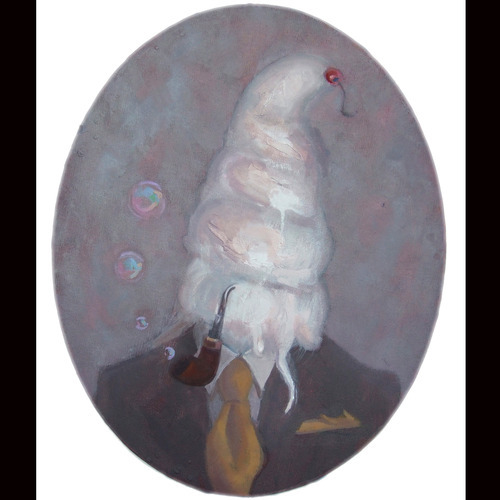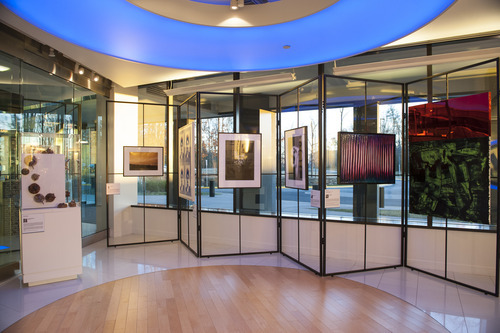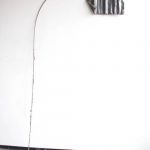Spotlight: VSA Emerging Young Artists Program
Announcing the 2014 Call for Entries
The Kennedy Center’s VSA, the leading international organization focused on arts and disability, is accepting applications for their annual juried competition and national touring exhibition. Open to artists with disabilities between 16–25 years old, the program awards placement in all-expenses-paid professional-development workshops and up to $20,000 in prizes. The theme of this year’s competition is The Journey, and the application deadline is June 30.
NYFA speaks to Rachael E. Nease, Coordinator of Visual Arts at VSA, about the application process, how artists are selected, and the benefits of the program.
NYFA: The Kennedy Center’s VSA has been a longtime supporter of artists living with disabilities through various programs and awards. What are the goals of this particular award for young artists?
RN: The VSA Emerging Young Artists Program, a Jean Kennedy Smith Arts and Disability Program, provides opportunities for young artists with disabilities aged 16 to 25 to participate in the arts and explore the possibilities of pursuing arts-based careers. The goal of the competition piece of the program is tri-fold: 1) to give young artists with disabilities a place in which their unique mode of expression and view of the world is highlighted and valued, 2) to provide the winners of the competition with opportunities to explore the skills needed for professional life, preparing them to be competitive in pursuit of arts-based vocations, whether as full-time visual artists or in a range of other professional capacities employing their creative talents, and 3) to position and give visibility to the work of artists with disabilities through exhibitions traveling throughout the United States and around the world, cementing their work in the broader context of the history, art, and culture of the American — as well as global — experience.

NYFA: Are artists who entered this competition in previous years encouraged to enter again?
RN: Yes, of course! Applicants who did not receive an award in the past are definitely welcome and encouraged to submit to the competition this year. We have so many talented artists who apply for this competition, which makes narrowing the field down to only fifteen winners each year a huge challenge, but we don’t think this should deter anyone from submitting their work. Artists should not be shy about re-entering the competition.
NYFA: Roughly how many applicants are judged each year?
RN: It varies each year, depending on the scope of the exhibition. Since 2002, when the Emerging Young Artists Program began, the number of entries has varied from just below 100 to nearly 400.
NYFA: The theme this year is The Journey. Do you have any additional advice as to how artists should interpret this theme?
RN: We try to leave the theme as wide open as possible in order to pull from a range of artistic perspectives and disability experiences. With this year’s theme, The Journey, submitted artwork could reflect an artist’s personal journey, metaphorical or literal, or a journey undertaken in some way by humankind, perhaps social or technological. Artists should consider the purpose and goals of this competition and traveling exhibition, as stated above. They should also consider VSA’s and Volkswagen’s commitment to examining work at the intersection of creativity, disability, and a sustainable future.

NYFA: Along with monetary prizes and exhibition opportunities, winners receive two days of all-expenses-paid workshops in Washington D.C. What types of guidance and opportunities will be provided at these professional development workshops?
RN: A weekend of professional development workshops is a new and exciting element of our Emerging Young Artists Program. In speaking with both former winners and specialists in the arts, we realized that while our program facilitated professional connections and exposed artists’ work to new audiences around the country, it was missing a primer on how to represent oneself as a professional artist in the highly competitive field of visual arts. This year, mentors with varied backgrounds will advise artists in a variety of lessons, including improving written artist statements, gaining gallery representation, crafting a verbal “pitch,” and simply, choosing the preferred method for sending your portfolio, among other practical exercises. We understand that artists have different strengths and competitions have differing requirements, so the need to be trained in a variety of methods of representing oneself, particularly at these pivotal moments, is an important one. Additionally, select winners will be provided with opportunities to speak on behalf of artists with disabilities and their work, as well as mentor and provide workshops for students in schools and communities along the exhibition tour path.

NYFA: Can you elaborate on the criteria on which applicants’ work will be judged?
RN: Applicants’ work will be judged not only on the quality and technical proficiency of the art, but also by demonstration of the theme The Journey, occurring at the intersection of artistic creation, sustainability, and the disability experience.
NYFA: Who makes up the judging panel?
RN: Pursuing a diversified set of voices in the field of visual arts, from art business to academics, this year’s panel includes practicing artists, gallerists, museum administrators, and university educators.
NYFA: The adjudication process is described as rigorous. Can you describe this process? How will the judges view the art?
RN: We work as a group to review the submissions, with each adjudicator completing an evaluation rubric for every artist’s set of images. We ask artists to submit four different works; we want to have a well-rounded sense of the artist’s portfolio.
NYFA: What are some common mistakes applicants should avoid when preparing and sending work to D.C.?
RN: The most common question that I receive is regarding image submission. Please upload four images of four different pieces of artwork from your portfolio. We want to have a sense of your work as a whole, and we may select more than one piece for display. Additionally, we ask applicants to please read the instructions carefully and send supplemental materials to the PO box address listed in our application guidelines, not to the Kennedy Center memorial [building]. We wouldn’t want your images or videos to be lost or arrive too late to be considered!
NYFA: Any final words of encouragement to young artists intimidated by this prestigious competition?
RN: First, keep in mind that we are not only seeking artists whose work is of high caliber, we are also interested in representing the disability experience from a broad range of viewpoints. Whether you feel that your disability impacts your art or not, we are genuinely interested in including your voice in the conversation about what it means to be a young artist living with a disability. Second, the prizes awarded through the Emerging Young Artists Program by the Volkswagen Group of America are incredibly generous — a $20,000 grand prize, $10,000 for first place, $6,000 for second place, and twelve awards of excellence at $2,000 each. If that doesn’t interest you as an emerging young artist, you’ve probably already made it big!
For more information about the VSA Emerging Young Artists Program and the other programming that the Kennedy Center’s VSA offers to artists with disabilities, please visit the VSA website.
To find additional awards for individual artists, visit NYFA Classifieds’ Opportunities & Services for ArtistsandNYFA Source.





